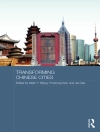Electron microscopy in the biological sciences can be divided into two disciplines. The first, concerned with high resolution detail of particles or periodic structures, is mostly based on sound theoretical principles of physics. The second, by far the larger discipline, is interested in the information obtainable from thin sections. The theoretical back- ground to those groups of techniques for preparing and looking at thin sections is often inexact and "loose", for want of a better word. What should be chemistry is often closer to alchemy. This kind of electron microscopy is often enshrined with mystical recipes, handed down from generation to generation. Admittedly, many of the processes involved, such as those required to embed tissue in epoxy resins, involve multiple interconnected steps, which make it difficult to follow the details of anyone of these steps. If all these steps are shrouded in some mystery, however, can one really trust the final image that emerges on the EM screen? When we present the data in some semi- quantitative form is there really no better way to do it than to categorize the parameters with ++, +/-, etc? What happens when one labels the sections with antibodies? Does the whole business necess- arily need to be more of an "art" than a "science"? Upon reflecting on these problems in 1981, I had the impression that many of the multi-authored textbooks that existed then (and that have appeared since) tended to exacerbate or at least perpetuate this
Gareth Griffiths
Fine Structure Immunocytochemistry [PDF ebook]
Fine Structure Immunocytochemistry [PDF ebook]
Koop dit e-boek en ontvang er nog 1 GRATIS!
Taal Engels ● Formaat PDF ● ISBN 9783642770951 ● Uitgeverij Springer Berlin Heidelberg ● Gepubliceerd 2012 ● Downloadbare 3 keer ● Valuta EUR ● ID 6381795 ● Kopieerbeveiliging Adobe DRM
Vereist een DRM-compatibele e-boeklezer












